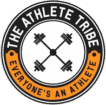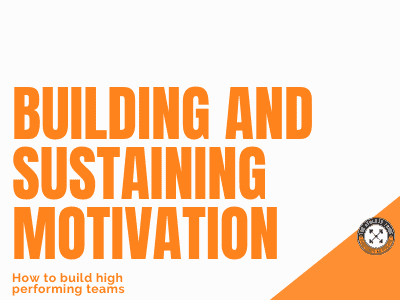What is the biggest challenge facing senior business leaders?
One of the biggest challenges facing senior business leaders, CEOs, individuals, founders, and pretty much everybody is creating motivation and sustaining excellence.
Through my executive coaching sessions with senior business leaders, I’ve come to realise that one of their most challenging problems is recruiting talent and keeping that talent.
It comes down to motivation. If you think about it, if your employees or the people underneath you are motivated to work for a company or yourself, then there will be huge benefits by building and sustaining performance, especially when things are not going well.
The Importance Of Motivation
We know that motivation is hugely important in both team and individual performance, and this is nothing new. If we think back to motivational theories like those of Abraham Maslow, who looked at self-actualisation, he talked about a series of basic needs that need to be met – food, sleep, relationships, etc.
The next step up would be self-esteem needs and, finally, self-actualisation. If we think about that – and a lot of the points I made in my previous article on group flow – we can see that those steps match that. So, for example, self-esteem, that feeling of being part of a group is one way to keep people highly motivated. But self-actualisation is when you feel that you are achieving something you are meant to do. And that’s very different. If we think about self-actualisation, nothing comes from external sources; it’s internal intrinsic motivation.
At the moment, what we seem to be doing is using extrinsic motivations, like financial rewards, or giving employees iPads or Pelton Bikes, etc. Of course, to a certain point, extrinsic motivation is highly useful. But realistically, it doesn’t last long because it requires more all the time. With intrinsic motivation, however, that’s something that’s internal to us. And once we get intrinsically motivated and passionate, we work harder, and we become more engaged.
Interestingly, in 2009, the London School of Economics said that they found financial incentives can negatively impact overall performance. So, we know that financial reward alone will not drive us to be part of that team and remain in that team.
Daniel Pink – Drive – AMP
One of the books that I’ve read that helped me formulate a bit of a model around this is Daniel Pink’s “Drive,” where he talks about autonomy, mastery and purpose.
“Autonomy, the urge to direct our own lives. Mastery, the desire to get better and better at something that matters. And purpose, the yearning to do what we do in the service of something larger than ourselves. These are the building blocks of an entirely new operating system for our businesses.” – Daniel Pink.
According to Pink, these three pillars go towards driving motivation. So, let’s break them down:
Autonomy
“Traditional notions of management are great if you want compliance. But if you want engagement, self-direction works better… It means paying people adequately and fairly. Getting the issue of money off the table and then giving people lots of autonomy.” – Daniel Pink.
Clearly, it is important to feel as if we have control over what we are doing. And for me, this is huge. When I’m performance coaching with business leaders, it’s one thing I feel that they are missing because, more often than not, their schedules are not determined by them. They feel as if they have no control over what’s going on day-to-day, which can be heavily demoralising and can cause stress and underperformance.
Google is a company that is encouraging autonomy by allowing staff to spend 20 per cent of their time working on any project they want within the company. They found that giving just 20 per cent autonomy to employees led to hugely successful products such as Gmail and Google News. So that short amount of time allowing people to do what they want can be hugely motivational and rewarding for the company.
Patagonia, the sporting/leisurewear company, had a different approach. They allowed their employees to go out and surf (they’re based on the west coast of America). Their company motto was “let my people surf.” They realised that by allowing their employees to have that time away from their actual work, they became between 400 and 500 per cent more productive.
So, we can see is that autonomy promotes creativity and most importantly, it drives engagement. Whether it’s in sport or in business, this is hugely important for a workforce or a team.
How to apply the principle of autonomy:
1. Don’t be worried about autonomy
What’s happening is leaders are becoming very afraid of allowing this autonomy. In the current climate, where more and more people are working from home due to the COVID-19 pandemic, leaders have become worried about what their employees are doing because they can’t see them. To mitigate their concerns, they’re scheduling back-to-back meetings to keep in constant contact with their team. However, they should be thinking about giving opportunities to their employees to go off and work on a project that is going to inspire them, rather than keeping tabs on them.
2. Let people create their own schedule
We can’t expect to be on from 08:00 to 20:00. It would be best if leaders allowed individuals to have input in determining their working hours. A significant factor is a person’s sleep profile, which Nick Littlehales talks about in our podcast — Understanding When We Are The Most Productive. For some, their peak performance or optimal motivation time is in the morning, while for others, it’s evening. We need to find the right time.
Allow learning
Super talented people want to learn. And you want to keep them in your team.
Give them autonomy over what they’re learning about and what courses or training they go on. This is where individual coaching comes in. You want to guide that person towards the best courses, but ultimately it is their decision, and they need to feel they have autonomy over it. One of my business coaching clients in the COGNITIVE ATHLETE PROGRAMME took on this approach, and it resulted in their team spending more time at work because they felt they were able to do what they wanted. So, for example, on a Wednesday afternoon, they could pop out to the gym, or they all got together as a group and went for a walk, or they played sports. So they felt as if they had control over their week, and it drove them to work harder.
Mastery
“The key to motivation doesn’t depend on elaborate incentive systems. What made a good work environment was getting better at stuff, mastery.” – Daniel Pink.
Now, for me, this starts at the top. So, as a CEO, business leader, coach, captain of a team, are you improving as a leader? Are you on this path to mastering leadership? Now, people might turn around and say, you never truly master leadership; you’re always learning, which is correct. But are you a better leader than you were six months ago? A year ago? This is where performance coaching helps business leaders identify areas that need to be improved and enhanced.
When I think back to flow states and the work of the Flow Collective Research, we know that one of the biggest triggers for flow is when your skills match your challenge. The higher the skill level, the higher the challenge pushes us towards this peak optimal experience, building and guiding mastery. This is the reason why people love to ski, love to surf because you’re trying to match your skills to the challenge.
Think about your role.
1. Are you being challenged enough?
2. Do you have the right skill set to be challenged?
3. How can you go about developing that skill set?
The idea of progressing all the time, getting that little bit better is hugely satisfying for an individual. Suppose you are going to the gym or trying to improve your running, you need to be writing down what you are doing so that you can look back six months later and say, “OK, wow, I was lifting X amount of weight while I was running at this pace. Now, look where I am.” Or, “OK. I know that I need to do more running, or I need to run at a different pace, or I need to get some performance coaching on my running technique,” or whatever it might be. That is hugely important to mastery.
Purpose
“You can think of purpose as purpose with a capital P and purpose with a small P. Purpose with the capital P is, ‘I’m healing patients. I’m making the world a better place. I’m providing scholarships to poor kids. I’m ending the climate crisis. I’m putting a dent in the universe. I’m doing something significant.’ You know what? That’s awesome. That’s great. That’s fantastic. That’s a very big motivator. But there’s also another motivator that you can think of as purpose with a small P. That’s just people knowing why they’re doing something in the first place. Summoning each of those is truly an incredibly effective form of enhancing people’s performance.” – Daniel Pink.
The little P purpose is just as, if not more, important than capital P purpose because that is what is going to make that individual stay in that team and work towards that bigger purpose. This is probably one of the most motivational things – an individual being in a company and feeling that they are doing what they were meant to do.
Let’s look at group flow. When somebody feels as if they are part of the team, they’re contributing, they are working towards something; they are hugely passionate and motivated to show up every day and work hard.
How can you apply this principle of purpose?
Create a clear vision and set clear goals. When people come in, they need to know that this is what we’re working towards; this is the purpose of our company, our team, etc.
Understanding values: Ensure the person you’ve employed or in your team is aligned with your team’s values.
It’s important to try to understand the individual and not just look at their qualifications and experience. That is key to developing that relationship. If people have strong relationships with their leaders, colleagues, and teammates, they will be more successful.
Summary
To summarise, it takes autonomy, mastery, and purpose to create motivation and sustain excellence in our teams. It will also allow us to recruit the best talent.
For more executive coaching advice and tips on achieving peak performance, check out our YouTube Channel, Instagram.
Lee
Director and Founder


